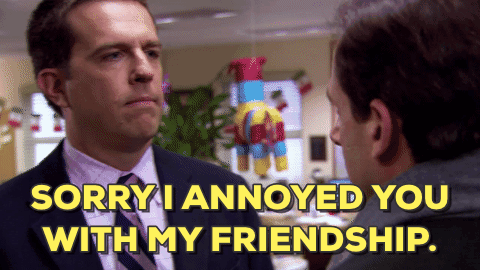One of LinkedIn’s lesser-known dirty secrets is that they choose which of your posts will be visible to most of your network and which posts will only be read by a select few. This isn’t new — LinkedIn has been doing it for a couple of years, but recently it has become so noticeable that I’ve received multiple questions from other LinkedIn users asking “what’s the deal?” One LinkedIn user sent a query directly to LinkedIn and was told that his posts were deemed “low quality” and that is why they weren’t seen by very many of his connections. LinkedIn refused to reveal the characteristics of low-quality posts, but based on the massive data set we’ve collected at Clearview Social in processing over 5 million social media share links, here are five reasons LinkedIn just might be hating on your updates:
1. You overshare
According to data out of Buffer App, Hootsuite and our own internal data, there are diminishing returns to posting to social media once you get to a certain number. Buffer pegs that number at 20 posts per month on LinkedIn. Our internal data at Clearview Social shows this to be a good measure. Go much higher than that number, and LinkedIn appears to hide your posts from more and more of your network. Posting more than 20 times per month isn’t going to help you, and posting way too much will hurt your distribution. Unless you are a proper celebrity or have a high-level of engagement with each and every post, don’t annoy people with too many posts.
2. You never add comments or insights
While I can’t be sure of how LinkedIn thinks about sharing updates with personal comments, I can tell you from our data that posts with comments get on average 56% more clicks than those that simply share a link to an article. 56% is a massive number, especially if you add it up over every post you share. It is worth taking the time to add an insightful comment and let your network know why you loved or hated the article you are posting – tell them why it’s worth their time to take a look. I gave a talk this past week in NYC and someone in the audience asked, “Is it ok to just add a comment like, ‘great article’ or ‘check this out!?'” My response: that may be better than nothing, but the quality of your comment does matter. The better the comment, the more likely people will actually read the article. If you can come up with a comment that adds value to the discussion and shows your intelligence or expertise, all the better.
3. You don’t share enough
According to the same statistics mentioned earlier by Buffer, if you share once each business day, 60% of your network will see at least one item you post in a month. If you look at this from the opposite extreme, if you only post once per month, only a tiny fraction of your network will see your posts. While LinkedIn hasn’t revealed how they weigh infrequent posts, our internal data at Clearview Social show that LinkedIn users who post at least weekly get 4x the number of clicks per share as those who post less frequently. If you post the most amazing thing in the world once a month, it isn’t likely to be seen by enough people to make a difference.
4. You don’t tag companies or people
LinkedIn used to be a far more closed network, meaning that only your connections could see items you posted, unless they were reshared or liked by your first-degree connections. Now, thanks to hashtags, anything you post with a hashtag (as long as your updates are set to “public”) can be seen by anybody searching for that hashtag. If possible, tag a company, person, or a topic using a hashtag with every single post.
5. You sometimes post “just for the hell of it”
This is probably more important than anything else I’ve posted so far. When you post updates that nobody cares about, not only will you generate very few likes, views, reshares, and comments, but you will also signal to the LinkedIn algorithm that your posts aren’t that great. Again, LinkedIn hasn’t shared this information, but in multiple organizations, I often see one individual posting 50-100 times per month and they may only get 1-2 clicks per share. It’s embarrassing. Tap the brakes! If you are posting just to be seen posting, you are like the dude at the cocktail party that can’t stop talking about himself.
Do you overshare? Do you undershare? Or are you trying to strike that perfect balance? Hopefully, these five tips will help you right the ship and persuade LinkedIn that you are one of the choice few who always post the good stuff. If you want to increase exposure, engagement and leads, download our infographic and follow the 7 Habits of LinkedIn Rainmakers.
Adrian Dayton is the Founder of Clearview Social, an internationally recognized speaker on social media for business development, and author of multiple books and white papers including most recently the strategy guide, “10X Your Website Traffic.”
Download eBook


